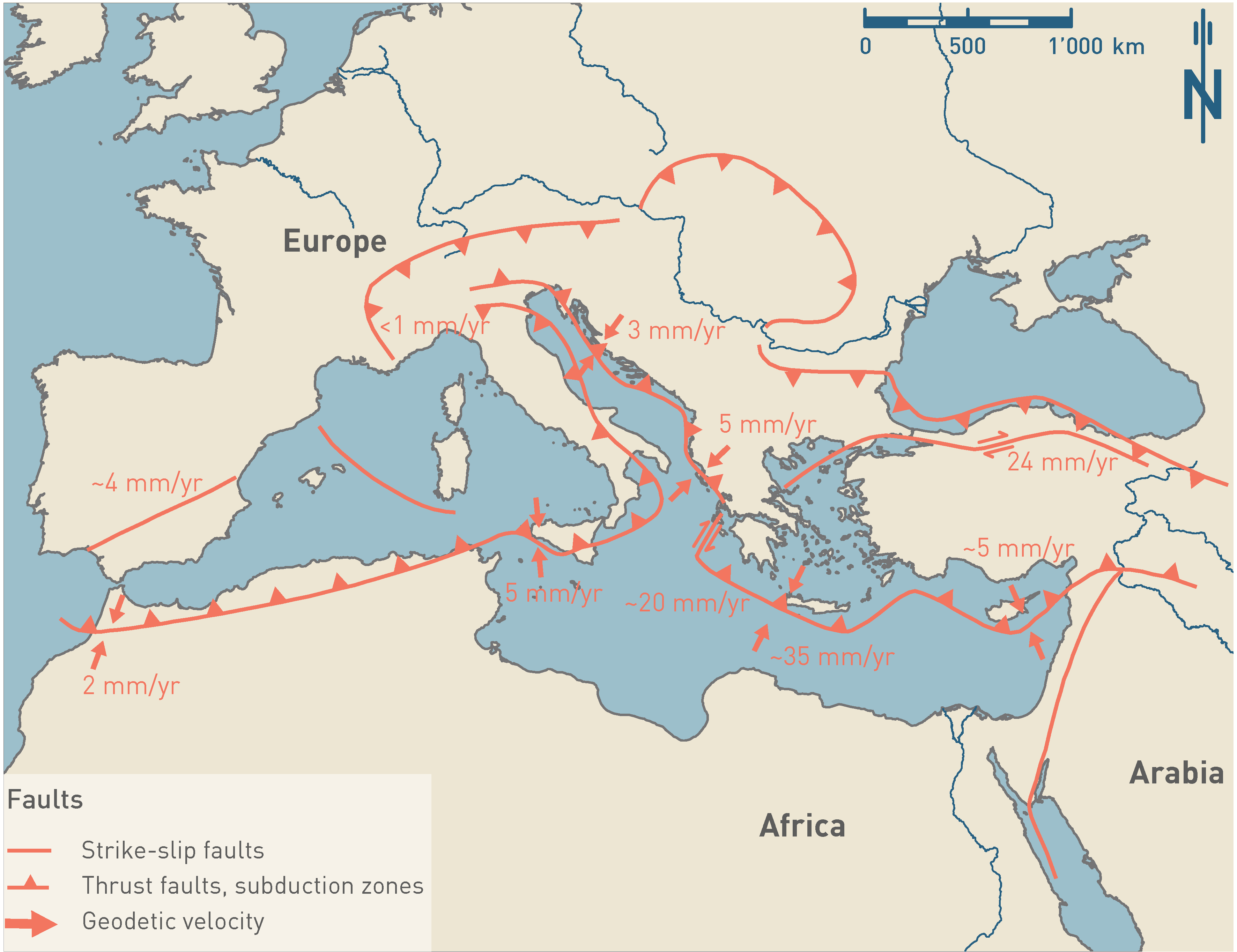Present-day Northern Switzerland is considered to be located within the rigid domain of Central Europe (Fig. 3‑5h; Nocquet & Calais 2004). With respect to seismicity, Switzerland has a well-documented historical record of seismicity and represents a transition between high rates south of the Alps and sparse seismicity within and north of the Alps (Houlié et al. 2018). The overall distribution of seismicity in Switzerland follows large tectonic domains, with seismicity clustering within the Upper Rhine Graben or the Valais for instance. A detailed description of the seismicity in Northern Switzerland is provided in Chapter 5.
The overarching geodynamic setting of Central Europe is influenced by ongoing convergence between the African and Eurasian Plates (Fig. 3‑12). The largest geodetic velocities are measured in the eastern part of the African – Eurasian plate boundary zone in Greece and Turkey (e.g. Serpelloni et al. 2022). Rates decline significantly towards the Alps. While some ongoing shortening is detected across the Eastern Alps, shortening rates across the Swiss Alps are very low to non-existent (e.g. Sánchez et al. 2018).
The vertical velocity field of the Alps based on GNSS measurements is in the order of ~ 2 mm/yr along the Alpine arc (e.g. Piña‐Valdés et al. 2022). Vertical velocity generally correlates positively with topography (e.g. Serpelloni et al. 2022). Tectonic drivers of ongoing Alpine uplift are overlain by buoyancy forces (e.g. Sternai et al. 2019, Piña‐Valdés et al. 2022). Low uplift rates (positive < 1 mm/yr to stable zero rates) are observed in the Jura Mountains and the Molasse Basin, but a weak signal extends further into the area of the Upper Rhine Graben shoulders (i.e. the Black Forest and Vosges Mountains; Sánchez et al. 2018, Henrion et al. 2020). This could be associated with observed subsidence within the Upper Rhine Graben north of Basel and west of the Upper Rhine Graben towards the Bresse Graben (e.g. Sánchez et al. 2018, Henrion et al. 2020.
It is anticipated that Northern Switzerland will be subject to ongoing deformation at low rates. This is influenced by the Alpine orogeny, the Upper Rhine Graben and tectonic activity of the Jura Fold-and-Thrust Belt.

Fig. 3‑12:Present-day geodetic movements relative to Eurasia
For detailed present-day geodetic velocities, see Section 6.2.
Geodetic velocities are taken from Nocquet (2012). The plate boundaries are modified after Pfiffner (2009).

